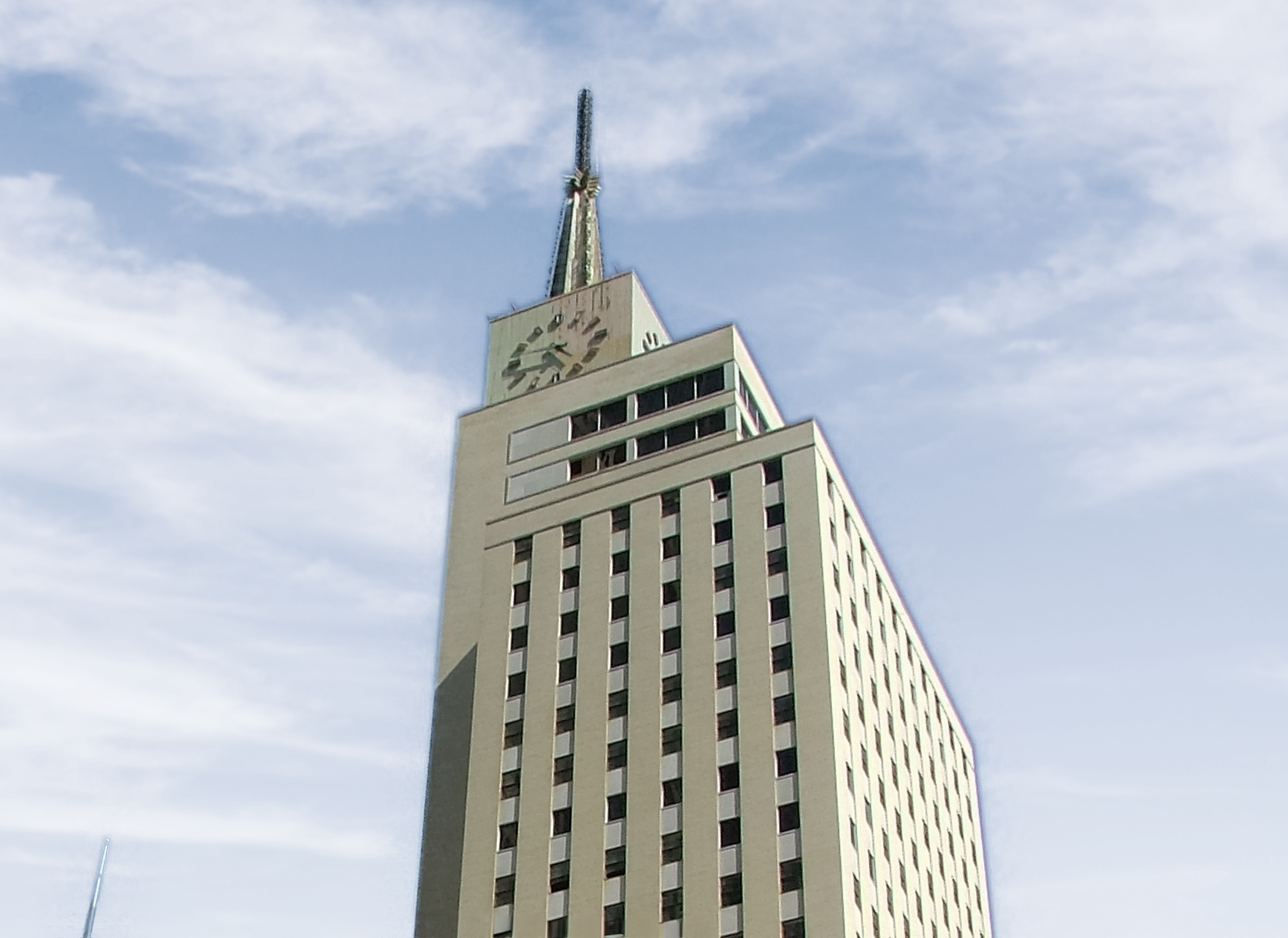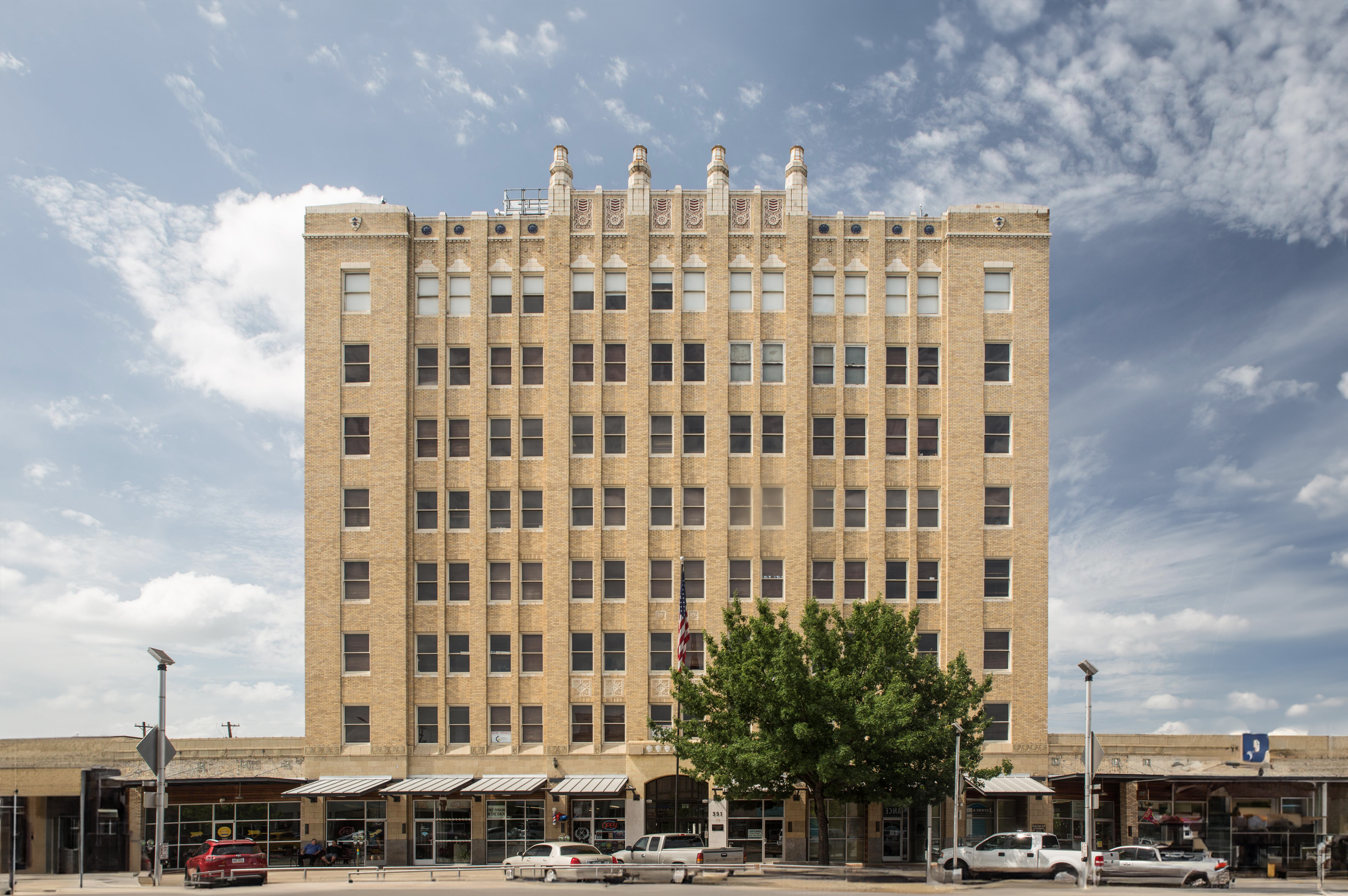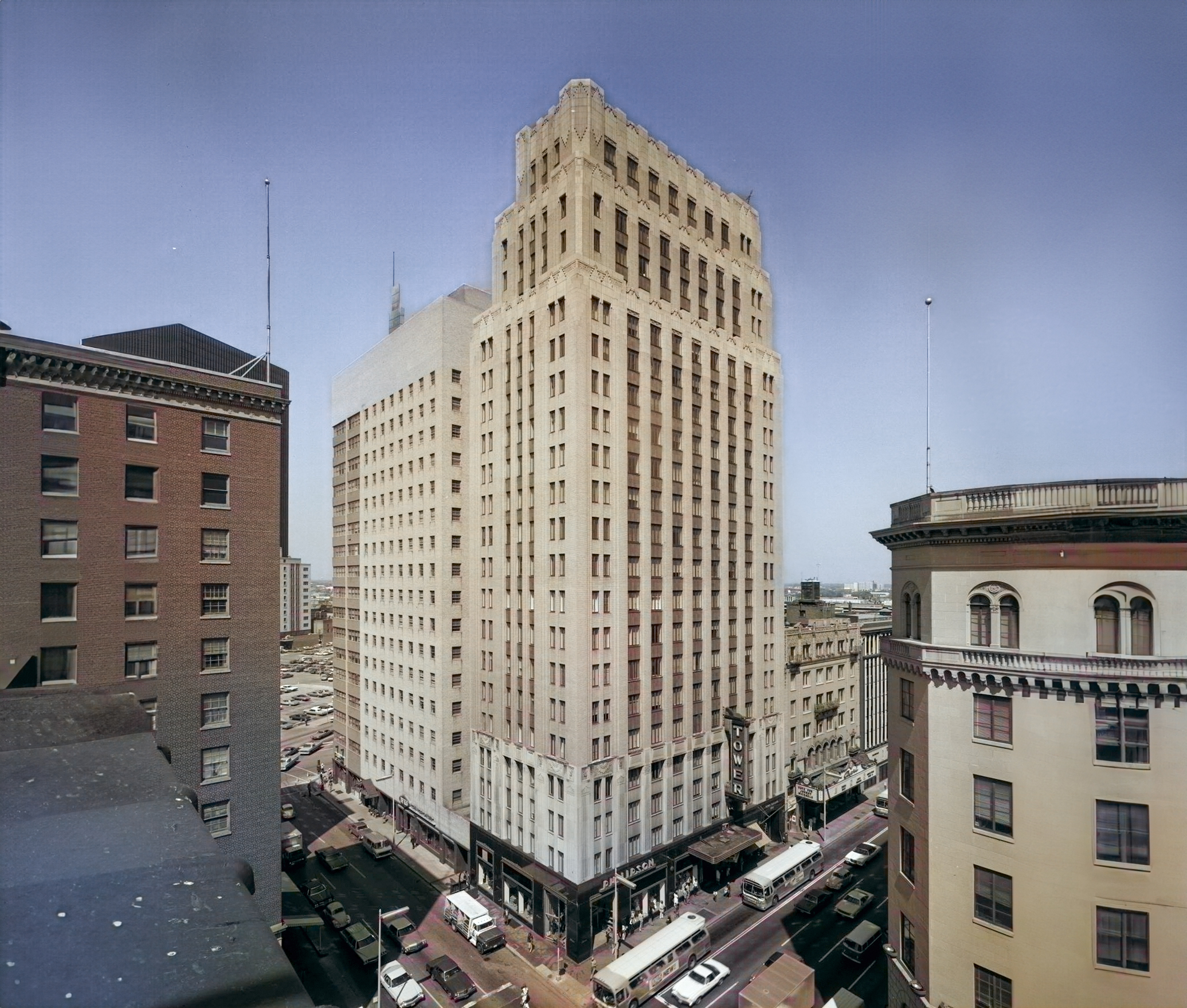The Mercantile National Bank Building is an Art-deco skyscraper designed by Walter W. Ahlschlager, and built between 1941 and 1943 in Dallas, TX.
Mercantile National Bank Building is not the only name you might know this building by though. The building is, or has also been known as The Merc.
Its precise street address is 1704 Main Street, Dallas, TX. You can also find it on the map here.
The Mercantile National Bank Building is a structure of significant importance both for the city of Dallas and the United States as a nation. The building embodies the distinctive characteristic features of the time in which it was built and the Art Deco style. Because of that, the Mercantile National Bank Building was officially declared as a national landmark on November 27th 2006.




